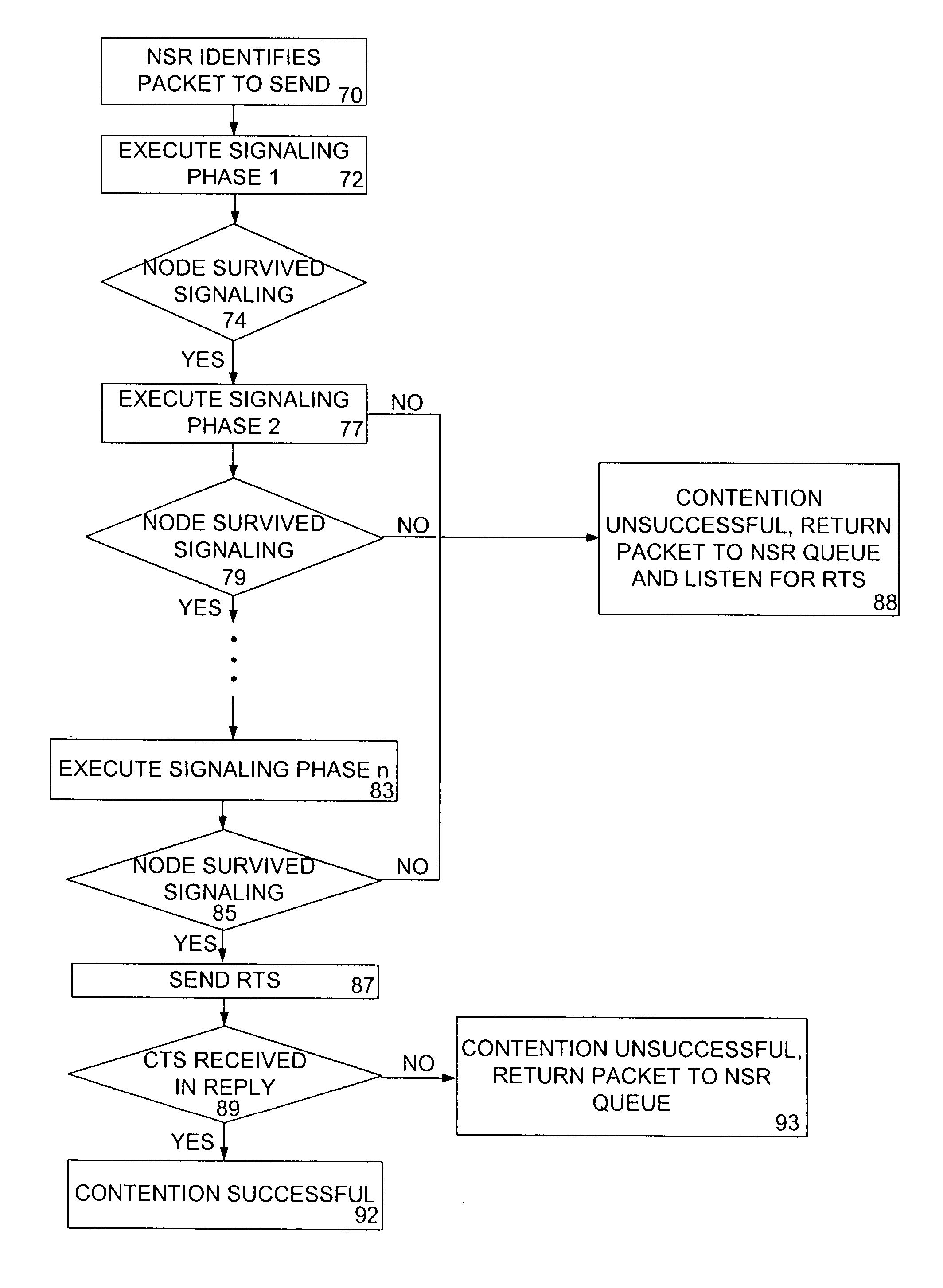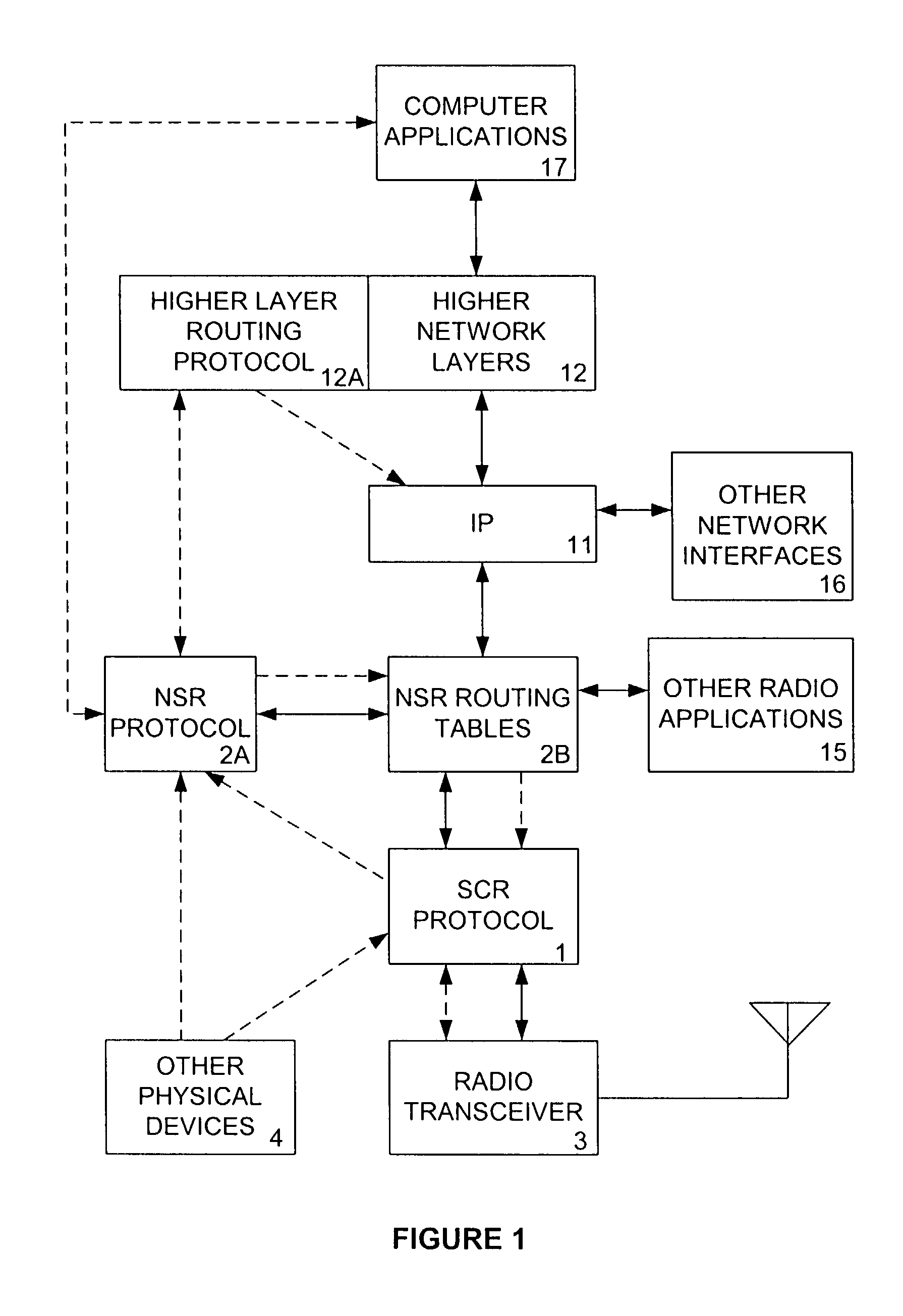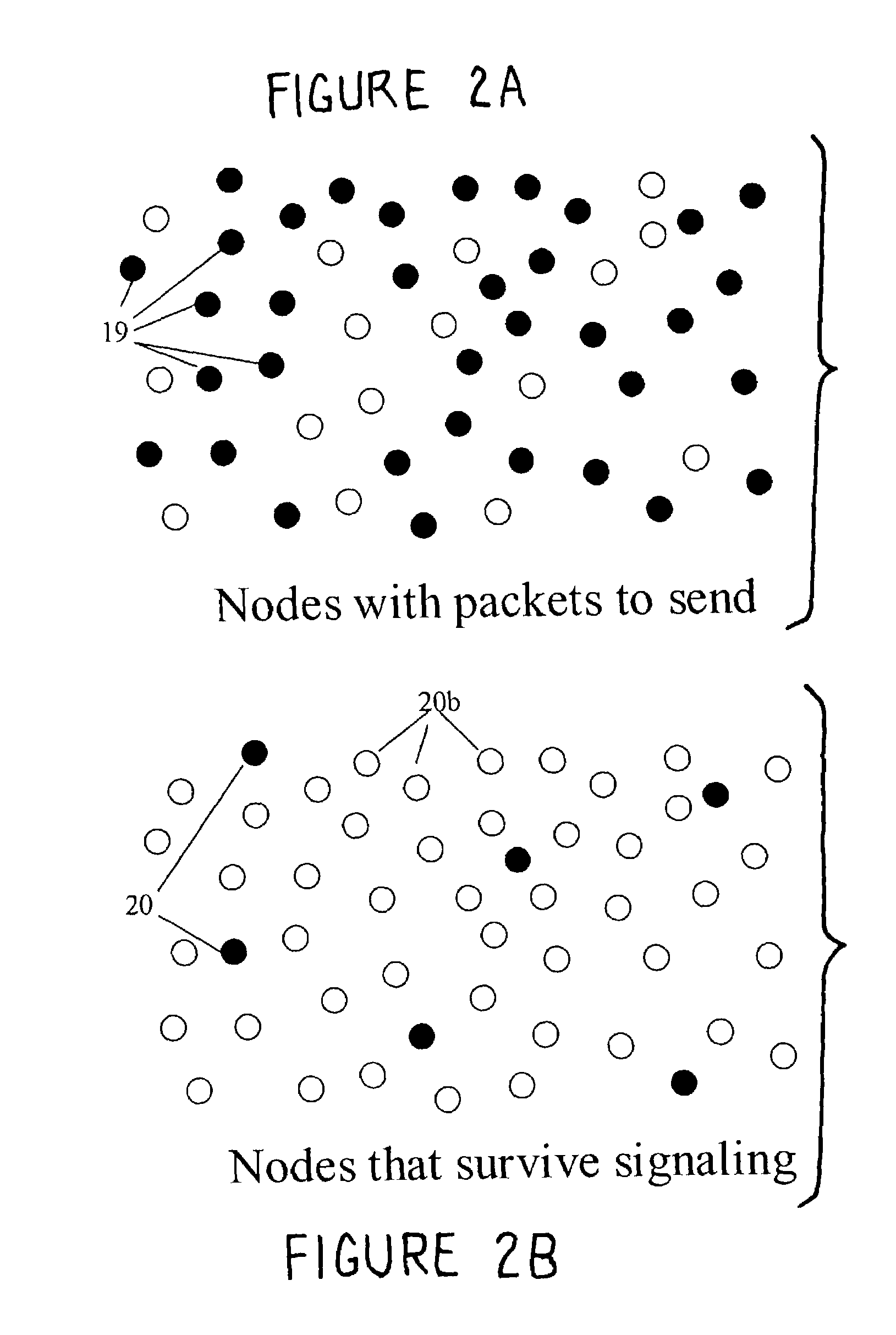However, the increased attenuation associated with such high frequencies will make cellular architectures centered on nodes communicating directly with base stations impractical.
Ad hoc networks have no base stations and are quite volatile.
However, the protocol's performance still degrades with congestion.
By contrast with 802.11, the performance of this access mechanism is robust to the density of nodes however is very susceptible to hidden node effects on account the timing of EYNPMA is based on the release of the channel by a
transmitter.
Its limitations are that it is sensitive to high node densities on account of the finite number of frequencies and typical of the slotted
aloha access mechanism is subject to congestion collapse as collisions may still occur in the RTR polls.
The dispersion of nodes in networks offers the potential to spatially reuse the
radio channel so that more than one pair of nodes can exchange data at a time but also results in the pesky hidden node phenomena where distant nodes transmitting simultaneously unbeknownst to each other interfere at one or both destinations.
The challenge to access protocols is to resolve from a
spatial distribution of transmitters a set that can use the channel simultaneously without interfering with each other.
Collisions may still occur during RTS-CTS exchanges but they only interfere with these short transmissions rather than the longer data transmissions.
Unfortunately, various studies reveal HIPERLAN's performance degrades significantly with an increase of hidden nodes.
The PCF enables a
central node, the point coordinator (PC), to schedule transmissions; however, the standard provides no guidance on how this should be done.
Currently no work attempting such a solution for an ad hoc network appears to exist.
Unfortunately, experiments demonstrate that this priority scheme is not effective at supporting QoS since there arc no mechanisms to distinguish between packets associated with
real time services and old data packets.
The problem is, of course, more pronounced in congested networks where more nodes would contend to transmit old, i.e. higher priority, data packets.
Unfortunately, several complications are introduced by the distributed nature of ad hoc networks.
In a dynamic network, keeping track of codes can be as complicated as keeping track of routes.
Third, unlike CDMA
cell phone systems, it is possible that a destination will be closer to an interfering
transmitter than its source
transmitter.
Even with a different spreading sequence the
relative power of the interfering signals can raise the effective
noise level of the channel such that the desired
signal is lost.
This is difficult, since it may be impossible to monitor an incoming transmission to this destination on account of separation from the distant source.
Not sensing a destination is busy is no guarantee that it is idle.
The problem with this approach is determining which transmitter's code a potential
receiver should use at a given time.
Transmitting to a destination that is already receiving a packet from another source can interfere with that reception.
Additionally, despite the presence of an offset when using common codes there is still an increased likelihood that signals may interfere with each other.
The
disadvantage of the second protocol over the first is its inability to broadcast packets.
The assignment of codes is also a problem in
spread spectrum ad hoc networks.
Random selection of codes may not assure the required
physical separation of nodes using the same codes.
Code assignment does not eliminate the unwanted interference from transmitters in close proximity to the destination end of other exchanges.
Although there has been much work on the use of
spread spectrum in ad hoc networks there are no protocols that completely integrate within a medium
access control protocol the assignment of codes, the scheduling of a spatially distributed set of transmissions, and a method used by nodes to select codes for transmission and reception.
In turn there are no methods that support the use of CDMA technology to transmit different messages from one node to many.
Obviously, having very accurate routes will insure that a
route can be found for a packet but may incur excessive routing overhead thus reducing the
payload capacity of the network and in-turn reducing end-to-end
throughput.
Similarly, with less overhead the network may be able to support more
payload but at the expense of greater delays and greater losses of packets and in-turn less end-to-end
throughput.
Additionally, most protocols are very dependent on the volatility of the network.
Node mobility invariably increases the overhead required to support routing.
The effect of failed links may take a while to resolve and can result in
route looping if some method is not applied to specifically preclude it from occurring.
In either approach changes can result in a deluge of overhead traffic.
In both the link state and distance vector approaches network volatility can result in so much overhead that network capacity collapses and network routes become inaccurate.
However, it is not effective at adding links except with a new discovery process.
Nodes have explicit routes to nodes within their own cluster but have limited understanding of the routes to nodes in other clusters except for the series of clusters the
route follows to ultimately get to the destination.
The distance vector and link state algorithms that perform so well for static networks are not suitable in highly dynamic networks.
Their effectiveness is questionable.
The challenge is that most MAC protocols for ad hoc networks are based on temporally random attempts to differentiate who has access.
But such priority access schemes are not effective in congested networks.
Even with the use of different codes hidden nodes may interfere if they are close to the destination.)
This is especially difficult in ad hoc networks since energy conserving actions must be made in a distributed manner.
HIPERLAN's approach is disconcerting since it does not make the dozing states known throughout the network.
The arrangement of having a surrogate node collect data for another may defeat many routing protocols.
The critical deficiency of both the 802.11 and HIPERLAN techniques is that they do not account for the repercussions of a
single node's decision to enter the doze state.
These repercussions are more congestion as nodes attempt to send traffic to nodes that are dozing and complications for other protocols higher in the stack such as routing.
Current access methods further limit the practicability of using energy consumed and node lifetime as part of a routing metric.
This increase in congestion results in failed access attempts and, thus, a corresponding increase in
energy consumption.
It is believed that the decreased consumption of energy used in transmitting a packet is more than balanced by an increase in
energy consumption to
gain access for a
net energy loss.
The success of a
mechanism based on a MAC mechanism can greatly affect the
routing protocol (e.g. dozing can remove potential routes) and vice versa (e.g. using shorter hops can increase congestion and preclude dozing).
 Login to View More
Login to View More  Login to View More
Login to View More 


